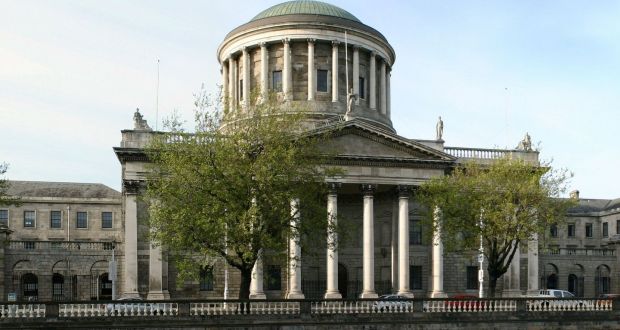Joe Carroll
The Supreme Court. The judges, the decisions, the rifts and the rivalries that have shaped Ireland
by Ruadhán Mac
Cormaic (Penguin Ireland, €27.99)
“We are the Supreme Court and under God we can do anything,” a judge of the court, Cecil Lavery, rebuked a young barrister who had the nerve to tell the court it did not have jurisdiction to decide a certain point. That barrister, Tom Finlay, later became a Chief Justice and so could see for himself just how far the court could go.
For the non-legal professional, this book is revelatory about how the justice system works in its upper reaches. At times it reads like a thriller as the author shows how various ground-breaking cases on abortion, contraception, homosexuality, extradition, neutrality and other important issues were weighed by the judges on the Supreme Court before reaching a decision.
The highest court was not always such an exciting place. Set up under the 1922 Constitution, the court dealt largely with technical points of law in its early decades but that would change with the fluoridation case in1963.
Judgement
A Drumcondra housewife, Gladys Ryan, challenged the new law that allowed local authorities to add fluoride to the water supply to combat dental cavities in children. Eventually she lost the case in the Supreme Court, but significantly the judgement upheld the assertion by Mr Justice Kenny in the High Court that Article 40 of the Constitution on personal rights included an unspecified right to “personal integrity”, citing the papal encyclical Pacem in Terris.
The author sums up the consequences. “It was a watershed moment. The Constitution contained rights that didn’t actually appear in the text. And that meant the only people with the authority to identify them – the judges of the Supreme Court – had just made themselves immeasurably more powerful.”
It was this power which led to the campaign to insert the right to life of the unborn child into the Constitution in 1983, the famous ‘Eighth Amendment’ which is now under challenge by the pro-choice movement. The lawyers behind the pro-life movement of the early 1980s, such as William Binchy, feared that a future Supreme Court would follow the US Supreme Court in finding a right to privacy and thus to have an abortion as was ruled in the Roe vs Wade case in 1973.
It was later that year that the Irish Supreme Court heard the appeal by May McGee against the 1935 criminal law preventing her from importing contraceptives and ruled in her favour, clearly influenced by the right to privacy as decided in the US. Hence the fears of the pro-life movement.
But when David Norris challenged the 19th-Century law criminalising homosexual acts, the Supreme Court referred to the Christian nature of the Preamble to the Constitution and on this basis refused Norris a right to privacy on this issue. The European Court of Human Rights later upheld Norris’s claim and obliged the then Government to amend the law.
While the Supreme Court continued to discover up to 20 personal rights not spelled out in the Constitution, the author writes that by the early 2000s a reaction was setting in against this “judicial activism” and there were no longer appeals to “natural law” and papal encyclicals.
One of the most outspoken opponents of judicial activism became Mr Justice Adrian Hardiman, who died earlier this year (2016), He was especially scathing in rejecting the case where the Equality Authority challenged Portmarnock golf club’s ban on female membership.
Influence
It is very interesting to follow how the Supreme Court changed according to the judges on it. The author attributes a huge influence to the liberal approach of Cearbhail O Dalaigh and Brian Walsh from the 1960s. It is also pointed out how judges reputed to be conservative on lower courts, became advocates of unenumerated rights when appointed to the top court such as Seamus Henchy. The US influence was catching.
The author using inside sources also describes how controversy has raged over the appointment of judges – a very topical subject now – and governments’ attempts to impose pay cuts although forbidden by the Constitution. A referendum was needed.
It is an education in itself to follow the reasoning of judges since independence in 1922. The natural law basis of judgments with appeals to papal encyclicals and Christian tenets has been abandoned as too vague. “What is natural law?” asked one judge.
The highly-respected Niall McCarthy, who died tragically with his wife in a car accident in Spain, argued in the Norris case that the source of the Constitution was not God but “the human personality” itself.
The Preamble still begins: “In the Name of the Most Holy Trinity from Whom is all authority and to Whom as our final end, all actions both of men and States must be referred.”
But the Preamble is not part of the Constitution proper. So is God in it or not?



